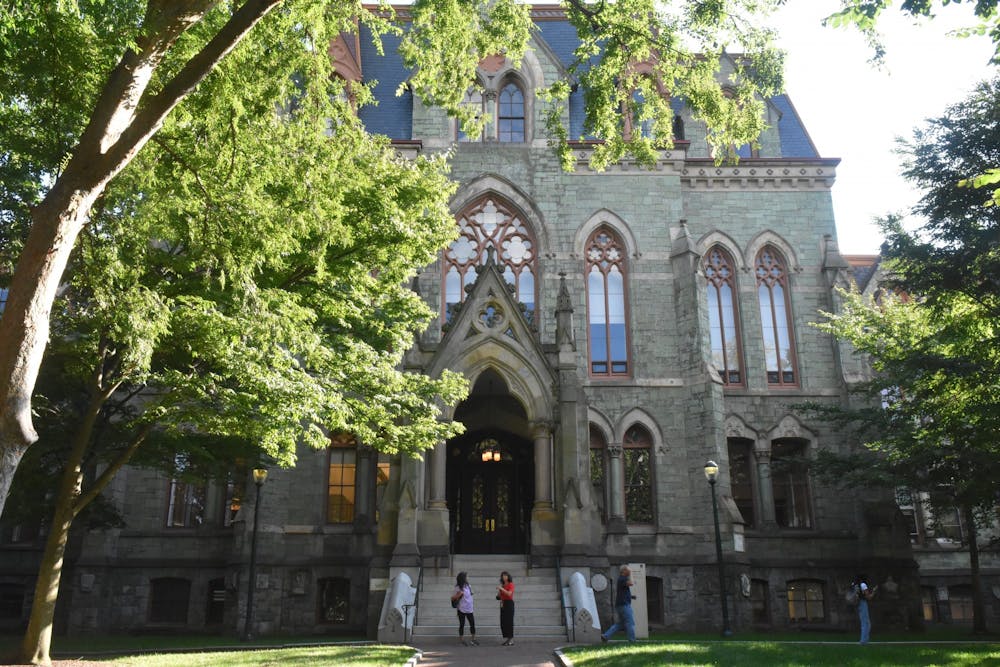A recent ranking placed Penn second to last for free speech on college campuses, prompting mixed reactions from some students.
The Foundation for Individual Rights and Expression, a non-profit aimed at protecting free speech on college campuses, released its third annual free speech ranking on Sept. 7, placing Penn second to last out of 203 schools surveyed – just ahead of Columbia University in last place. The University of Chicago came in first, followed by Kansas State University, Purdue University, Mississippi State University and Oklahoma State University. Skidmore College, Georgetown University, and Rensselaer Polytechnic Institute rounded out the bottom five.
In the full report, FIRE ranked Penn 188th for disruptive conduct, 187th for comfort expressing ideas, and 130th for administrative support. Penn ranked 69th for tolerance of liberal speakers and 151st for tolerance of conservative speakers. According to the full report, for every one conservative student at Penn, there were approximately 5.9 liberal students.
Penn received a low score in the FIRE report for administrative behavior due to one successful disinvitation of a speaker in 2019 and five attempts to sanction scholars, including three attempts to sanction Penn Law professor Amy Wax and one attempt to sanction Robert Schuyler and María Paula Romo.
Some students that the Daily Pennsylvanian spoke with said that FIRE’s ranking for Penn was inaccurate, describing the campus free speech environment as average or comparable to other elite universities, while acknowledging occasional instances of certain views being censored.
College senior Matthew Liu, the communications chair of Penn’s chapter of Young Democratic Socialists of America, said he believes that Penn administration does suppress discussion around certain issues and uses intimidation tactics to discourage students from protesting.
“Penn is very good at promoting the rhetoric of free speech and talking about how they are in support of speech while also in more subtle, indirect ways limiting or restraining [speech.] I have seen it a little more so, generally speaking, with students if they tend to be underrepresented at Penn, whether that be women or people of color,” Liu said.
Liu added that he believes the administration’s response to UC Townhomes protesters is a recent example of Penn trying to quell productive discourse, speech, and activism on campus.
RELATED:
At press conference, Fossil Free Penn alleges admin. are intimidating encampment protestors
Several colleges have used an artificial intelligence tool to track student protests
Students face disciplinary action from Penn for alleged participation in Convocation protest
College and Wharton sophomore Joshua Frazier, the political director for College Republicans, said he sees self-censorship as a larger issue on campus than how Penn administrators approach free speech.
“Free speech is neither hindered nor promoted by Penn’s administration. I think the bigger problem exists with students self-censoring due to social pressures,” Frazier said. “A lot of times, we have this self censorship, whether it's [that] we don't want to offend someone else… or don't feel like we could defend our belief to an Ivy League professor.”
The primary factors differentiating the top five and bottom five schools in FIRE’s ranking are “Comfort Expressing Ideas,” “Administrative Support,” “Administrative Behavior,” and “Tolerance Difference.”
The survey’s categories were summed to create an overall score out of 100 for each school. Penn scored 14.32 overall.
According to FIRE’s ranking, 63% of students surveyed were worried about damaging their reputation because of someone misunderstanding something they said and 21% reported that they self censor “very” or “fairly” often. Both Frazier and Liu agreed that Penn is more tolerant towards liberal views on social issues.
“There is a little bit of censorship of conservatives on social issues, I will give them that,” Liu said.
FIRE’s report indicated that at the colleges they surveyed, there was more support for liberal speakers than controversial speakers. Frazier said that he appreciates the diversity of thought that exists at Penn. He cited the Government and Politics Association debate held last March, which featured both conservative and liberal speakers, as one notable example of respectful and productive free speech on campus.
“It was just a lot of camaraderie and not prejudiced or anything amongst the student body, which is something not common that you hear on the news every day,” Frazier said.
Frazier and Liu added that they believe that college provides a good opportunity for students to be exposed to different ideas, describing the University as an environment that is uniquely “conducive” to freedom of speech.
FIRE used data collected from College Pulse, a college survey platform, to create their ranking. 44,847 student respondents enrolled in four-year degree programs were surveyed at 208 colleges and universities in the United States.
FIRE hosted an open Zoom session last on September 21, which focused on its 2022-2023 college free speech rankings. At the session, FIRE senior research fellow Sean Stevens said that schools could improve their ranking by having administrators publicly support free speech, defend scholars rather than sanction them, and revise campus speech policies.
FIRE Vice President of Research Adam Goldstein said at the session that schools can improve by defending the practice of tenure, describing the protection as “the lifeblood of academic freedom and free speech on campus.”
Frazier said professors can help facilitate free speech by creating a venue for open discussion.
“I think that classrooms should be safe spaces for all voices – and safe spaces not in the fact that we cut out opinions from the classroom, but rather we include all, and all agree, that we might debate really tough subjects in the classroom,” Frazier said.
FIRE was cofounded in 1999 by Penn Professor Emeritus Alan Charles Kors, prompted by his involvement in a scandal regarding free speech on campus. In 2012, FIRE ranked Penn in the top seven colleges for free speech.









